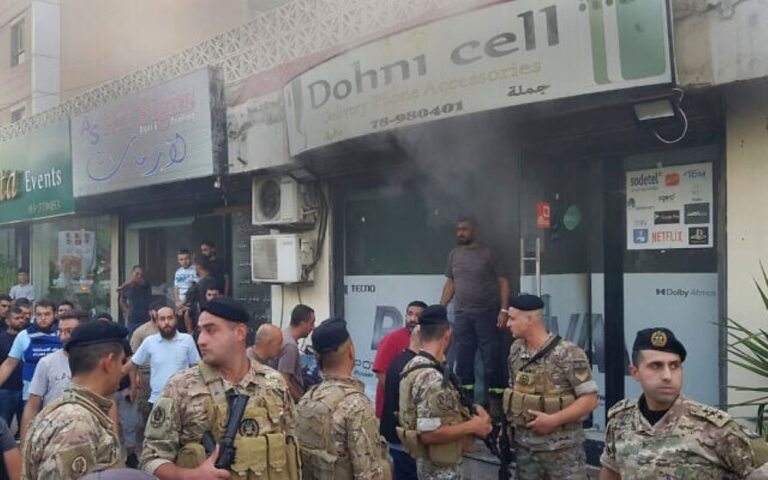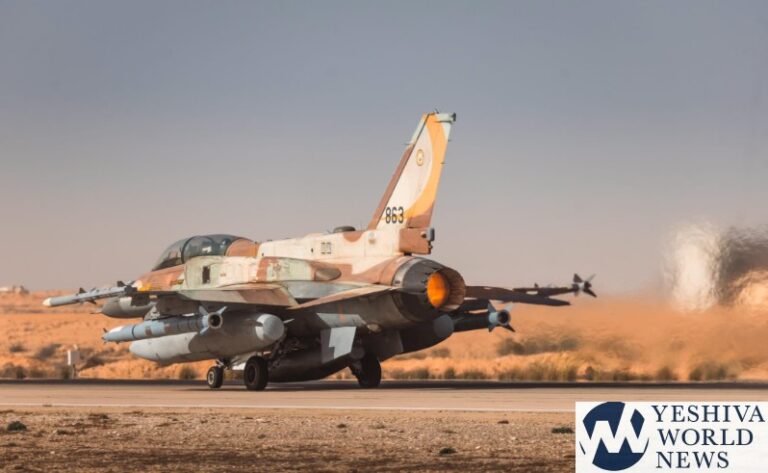China conducted “precision missile strikes” Thursday in the Taiwan Strait and in the waters off the eastern coast of Taiwan as part of military exercises that have raised tensions in the region to their highest level in decades.
China earlier announced that military exercises by its navy, air force and other departments were underway in six zones surrounding Taiwan, which Beijing claims as its own territory to be annexed by force if necessary.
Five of the missiles fired by China landed inside Japan’s Exclusive Economic Zone off its coast, Japanese Defense Minister Nobuo Kishi said. He said Japan protested the missile landings to China as “serious threats to Japan’s national security and the safety of the Japanese people.” The missiles landed off Hateruma, an outer island quite far from the main islands of Japan, he said.
The drills were prompted by a visit to the island by U.S. House Speaker Nancy Pelosi this week and are intended to advertise China’s threat to attack the self-governing island republic. Along with its moves to isolate Taiwan diplomatically, China has long threatened military retaliation over moves by the island to solidify its de facto independence with the support of key allies including the U.S.
China fired long-range explosive projectiles, the Eastern Theater Command of the People’s Liberation Army, the ruling Communist Party’s military wing, said in a statement. It also said it carried out multiple conventional missile launches in three different areas in the eastern waters off Taiwan. An accompanying graphic on state broadcaster CCTV showed those occurred in the north, east, and south.
“All missiles hit the target accurately,” the Eastern Theater said in its announcement. No further details were given.
Taiwan’s Defense Ministry said it tracked the firing of Chinese Dongfeng series missiles beginning around 1:56 p.m. Thursday. It said in a statement it used various early warning surveillance systems to track the missile launches. It later said it counted 11 Dongfeng missiles in the waters in the north, east and south.
The ministry also said it tracked long-distance rockets and ammunition firing in outlying islands in Matsu, Wuqiu and Dongyin.
Earlier during the day, Taiwan’s Defense ministry said its forces were on alert and monitoring the situation, while seeking to avoid escalating tensions. Civil defense drills were held last week and notices were placed on designated air raid shelters months ago.
China’s “irrational behavior” intends to alter the status quo and disrupt regional peace and stability, the ministry said.
“The three service branches will combine efforts with all the people to jointly safeguard national security and territorial integrity” while adapting to the situation as it develops, the statement said.
China’s official Xinhua News Agency reported the exercises were joint operations focused on “blockade, sea target assault, strike on ground targets, and airspace control.”
Ma Chen-kun, a professor at Taiwan’s National Defense University, said the drills were aimed at showing off the Chinese military’s ability to deploy precision weapons to cut off Taiwan’s links with the outside and facilitate the landing of troops.
The announced drills are “more complete” than previous exercises, he said.
“If the People’s Liberation Army actually invades Taiwan in an all-out invasion, the concrete actions it will take, it’s all in this particular exercise,” Ma said.
“The main thing is they will cut off Taiwan’s links to the outside world, from their sea, they would suppress the coastal defense firepower,” he said.
Meanwhile, the mood in Taiwan was calm.
In Keelung, a city on the northern coast of Taiwan and close to two of the announced drill areas, swimmers took their morning laps in a natural pool built in the ocean.
Lu Chuan-hsiong, 63, was enjoying his morning swim, saying he wasn’t worried. “Because Taiwanese and Chinese, we’re all one family. There’s a lot of mainlanders here, too,” he said.
“Everyone should want money, not bullets,” he quipped, saying the economy wasn’t doing so well.
Those who have to work on the ocean were more concerned. Fishermen are likely to be the most affected by the drills, which cover six different areas surrounding Taiwan, part of which come into the island’s territorial waters.
Most fishermen will continue to try to fish, as it is the season for squid.
“It’s very close. This will definitely impact us, but if they want to do this, what can we do? We can just avoid that area,” said Chou Ting-tai, who owns a fishing vessel.
While the U.S. has not said it would intervene, it has bases and forward-deployed assets in the area, including aircraft carrier battle groups.
On Thursday, the U.S. Navy said its USS Ronald Reagan aircraft carrier was operating in the Philippine Sea, east of Taiwan, as part of “normal scheduled operations.”
Secretary of State Antony Blinken addressed the drills Thursday saying, “I hope very much that Beijing will not manufacture a crisis or seek a pretext to increase its aggressive military activity. We countries around the world believe that escalation serves no one and could have unintended consequences that serve no one’s interests.”
U.S. law requires the government to treat threats to Taiwan, including blockades, as matters of “grave concern.”
The drills are due to run from Thursday to Sunday and include missile strikes on targets in the seas north and south of the island in an echo of the last major Chinese military drills aimed at intimidating Taiwan’s leaders and voters held in 1995 and 1996.
On the diplomatic front, China canceled a foreign ministers’ meeting with Japan to protest a statement from the Group of Seven nations that there is no justification for the exercises. Both ministers are attending a meeting of the Association of Southeast Asian Nations in Cambodia.
“Japan, together with other members of the G-7 and the EU, made an irresponsible statement accusing China and confounding right and wrong,” Chinese Foreign Ministry spokesperson Hua Chunying said in Beijing.
While China has given no word on numbers of troops and military assets involved, the exercises could be the largest held near Taiwan in geographical terms, experts have said.
The exercises involved troops from the navy, air force, rocket force, strategic support force and logistic support force, Xinhua reported.
(AP)












5 Responses
1. Most weapons are very precise when tested in peacetime. Performance under wartime conditions is an unknown.
2. The best China can hope for if they invade Taiwan is the United States, and probably many other countries, will refuse to trade with China, and will engage in substantial rearmament. The worst that will happen is World War III.
3. Other than being a good example of democracy, Taiwan is not a threat to China.
sick society, ban them from Israel
All this because Nancy was having trouble with her drunken husband. She needed a BIG diversion. Seems like she got more than she bargained for.
@sara rifka who?
I pray for the fall of China and America and those countries contributing to the filth and evil……bye China….